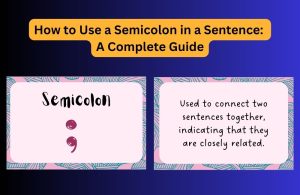Coherence is the logical organization of ideas in a writing, ensuring that the writing flows smoothly and is easy for readers to follow. As an English teacher with years of experience, I’ve seen many students struggle with maintaining coherence in their writing. Therefore, in this post, I’ll share my expert tips on maintaining coherence in writing, with clear examples and explanations.
To maintain coherence in writing, you must organize your ideas logically and consistently and use different cohesive devices. These devices connect different parts of your writing and create a sense of continuity, helping to establish the logical flow of your writing.
You may try Fifty Ways to Practice Writing: Tips for ESL/EFL Students to practice and improve writing with pen and paper and typing. By applying these methods, you will write more, write faster, and write more correct and more interesting papers and letters.
Now, let’s see how you can ensure coherence in your writing. The following tips apply to any writing. However, before I share the tips, let’s learn the importance of coherence.
Table of Contents
- Understand the Importance of Coherence
- Use Clear and Concise Topic Sentences
- Organize Your Ideas Logically
- Use Different Cohesive Devices
- Use Parallel Structure
- In Conclusion
Understand the Importance of Coherence
Understanding the importance of coherence is crucial for effective communication in writing. Incoherent writing can cause confusion and frustration as well as it may discredit the writer’s message. Well! Now, let’s see the importance of coherence.
- Coherence ensures the clarity and understandability of your writing. Logical and sequential ideas help readers follow your argument, understand the main points, and draw their own conclusions.
- Coherence can also help you to make your writing more persuasive. If ideas are presented logically and connected, readers are more likely to be convinced by your argument.
- Coherence can enhance your credibility as a writer too. Coherent writing shows that you’ve carefully considered the topic, organized your ideas, and effectively communicated your message.
- Coherence can help you to engage readers to its best. By coherent writing, they stay engaged and interested in the topic.
Now let me share some tips you should follow to ensure coherence in your writing. I believe these tips can best help you to master your English writing skills.
Use Clear and Concise Topic Sentences
Clear and concise topic sentences are essential for coherence in writing as they provide a roadmap for readers. They state the paragraph’s focus, help readers understand it easily, and anticipate the writer’s points. Well-written topic sentences also can establish the logical flow of writing, while unclear or ambiguous ones can confuse the reader and disrupt the main ideas.
In addition to maintaining coherence, clear and concise topic sentences can also help to improve the overall quality of the writing. For example, when you have a clear idea of the main point you want to make in each paragraph, you can better develop your ideas and provide evidence to support your arguments.
Organize Your Ideas Logically
Logically organizing your ideas makes sense to the reader. To maintain coherence in your writing, consider organizing your thoughts chronologically, by importance, or by a specific pattern.
Suppose you’re writing a descriptive essay about your favorite place. In this case, maintaining coherence would involve arranging your description logically and sequentially. For instance, you might start by describing the place’s location, then move on to its physical features, such as the landscape, buildings, or landmarks.
From there, you could go on to describe the atmosphere and any activities or experiences you associate with the place. By coherently organizing your description, your reader can visualize the place and feel its emotions.
Use Different Cohesive Devices
Cohesive devices are words or phrases that connect different parts of a piece of writing together and create a sense of coherence. Let’s see some common types of cohesive devices.
#1 Pronoun
Pronouns are one of the most common types of cohesive devices used in writing. They refer back to a previously mentioned noun, helping to connect ideas and establish a sense of continuity in writing. Replacing the noun with a pronoun can avoid repeating the same word multiple times and make the writing more concise and readable.
For example, instead of writing,
“John went to the store. John bought some apples,”
the writer can use a pronoun to create a more cohesive sentence:
“John went to the store and bought some apples.”
The pronoun “he” refers to the previously mentioned noun “John,” connecting the two ideas and creating a smoother flow of writing.
#2 Conjunctions
Conjunctions are words that connect different parts of a sentence or multiple sentences. They help show the relationship between ideas and create a cohesive flow in writing. For instance, the conjunction “and” is used to add ideas to a sentence, while “but” is used to show a contrast. Similarly, “however” is a conjunction used to signal a transition between two ideas.
Proper use of conjunctions is crucial in maintaining the coherence and clarity of a piece of writing. They help structure ideas logically, making it easier for readers to follow along and understand the message. However, you should not overuse conjunctions, as this can lead to a repetitive or confusing flow of ideas.
Let’s see an example.
“John is smart, and he is also funny.”
Using the conjunction “and” here connects the two ideas and shows that John possesses both qualities. This creates a more cohesive and complete picture of John as a person.
#3 Transitions
Transitions are words or phrases connecting different parts of a sentence or multiple sentences. They help to establish a logical flow of writing by signaling to the reader how ideas are related and how they fit together. Several types of transitions include addition, contrast, time, and cause and effect.
1) Addition Transitions
Addition transitions, such as “in addition,” “moreover,” and “furthermore,” are used to connect ideas that add to or continue a previous point. These transitions signal to the reader that the writer is building upon a previous idea and help the reader follow the train of thought.
2) Contrast Transitions
Contrast transitions, such as “however,” “nevertheless,” and “on the other hand,” are used to signal a contrast or a change in direction. They help create a clear separation between ideas and show their differences or differences.
3) Time Transitions
Time transitions, such as “meanwhile,” “afterward,” and “previously,” are used to show the passage of time and connect ideas chronologically. These transitions help the reader understand the sequence of events or presented ideas.
4) Cause and Effect Transitions
Cause and effect transitions, such as “therefore,” “consequently,” and “as a result,” are used to show the relationship between ideas and how they lead to a particular outcome. They help to establish a clear cause-and-effect relationship between different ideas or events.
#4 Repetition
Repetition is a writing technique that involves repeating a word, phrase, or sentence structure to reinforce an idea or create a particular effect. By repeating certain words or phrases, writers can emphasize key points, establish a rhythm, and make their writing more memorable for readers.
For instance, consider the famous opening line of Charles Dickens’s novel, “A Tale of Two Cities”: “It was the best of times, it was the worst of times.” The repetition of the phrase “it was the” creates a sense of symmetry and balance while highlighting the contrasting nature of the times that Dickens describes.
While repetition can be a powerful tool in writing, it’s essential to use it carefully. Overusing repetition can make writing appear tedious and repetitive. Effective writing balances repetition with other cohesive devices, such as transitions and variations in sentence structure, to create a varied and engaging flow.
#5 References
References connect ideas by referring back to an earlier part of writing, such as a sentence or paragraph. By using connections effectively, you can create a clear and logical structure for your writing, making it easier for readers to follow along and understand their arguments or ideas. This is especially important in longer pieces of writing, such as essays, research papers, or even books, where there may be much information to convey.
For instance, in a paragraph about the benefits of coffee, a writer might say, “As previously mentioned, coffee can help improve focus and mental clarity.” Likewise, by using references, writers can maintain coherence and help readers follow the flow of ideas.
So, by using these cohesive devices effectively, you can create clear, organized, and effective writing that engages and informs the reader.
Use Parallel Structure
Parallelism is a writing technique that involves using the same grammatical structure for similar ideas. This creates consistency and clarity in writing, making it easier for readers to understand the relationships between different ideas.
For example, consider this sentence:
“I like hiking, swimming, and biking.”
The parallel structure of this sentence means that each activity is presented in the same grammatical format, using the same verb form and tense. This creates a clear and consistent pattern, making it easier for the reader to understand the list of activities.
Parallelism can be used in many different ways in writing. For instance, it can be used to create lists of items, as in the example above. It can also be used to develop a sense of balance and symmetry in a sentence, as in the famous quote from Abraham Lincoln’s Gettysburg Address: “Government of the people, by the people, for the people.”
In Conclusion
Maintaining coherence in writing is essential for creating effective and engaging written work. Using the above-mentioned cohesive devices, you can connect ideas to maintain coherence throughout your writing.
Whether you are writing a short story, a research paper, or a business report, it is important to use these techniques appropriately and consistently to ensure that your writing is clear, effective, and easy to understand. By following these expert tips for maintaining coherence in writing, I believe you can produce engaging, persuasive, and impactful writing.
Thanks for reading.
Happy learning.





